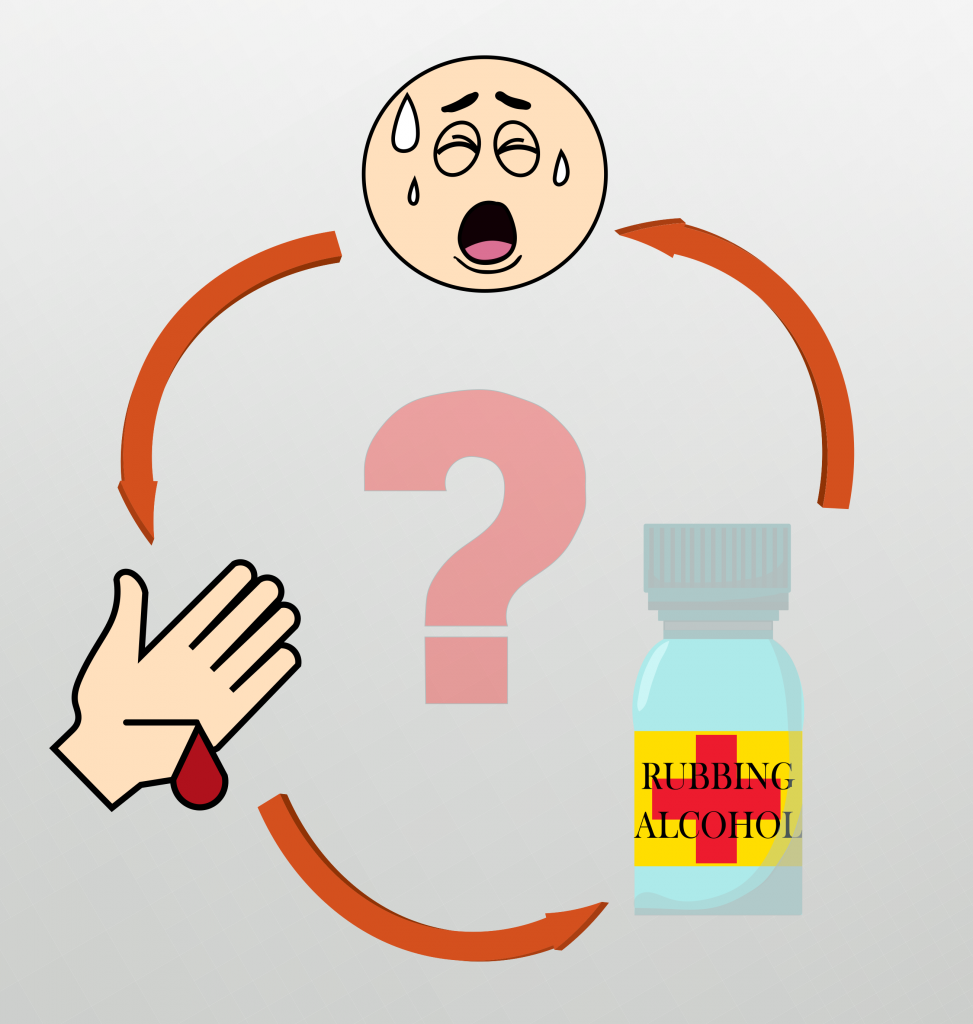Have you ever wondered why rubbing alcohol, i.e. isopropyl alcohol, which is used to disinfect cuts burns so much when applied to the wound? As my mother always said: “As long as it burns, it helps”. This didn’t help me much as a kid, anyway. But why does it burn in the first place? Do you feel the bacteria die? Do some of your cells get killed, too, and you feel that?
In fact, neither is true. Interestingly, the pain you feel is due to a heat reaction. But wait, doesn’t alcohol usually give you a cool sensation when applied to the skin? True, but when the alcohol is able to penetrate your skin, e.g. when you have a cut, it gets in contact with your vanilloid receptors-1 (VR1). These are heat-gated receptors that normally get activated when the temperature rises above 42 °C, sending a painful sensation to prevent tissue damage by overheating. But why do your VR1 send a pain signal, even though the temperature does not rise above 42 °C? A study, a few years back, showed that alcohol has a similar effect on VR1 as capsaicin, the substance from chilies responsible for the hot taste.[1] Alcohol and capsaicin “trick” the VR1 by lowering the switch temperature from the above mentioned 42 °C to roughly 34 °C. Accordingly, your body temperature is high enough to induce an alert signal of VR1, giving you a burning (heat) pain even though your tissue isn’t nearly hot enough.
Maybe it helps you in the future when disinfecting wounds (or eating hot food) when you think that the pain is not real but rather a trick by played due to your heat receptors.
–Andreas Neidlinger
Reference:
[1] M. Trevisani, D. Smart, M. J. Gunthorpe, M. Tognetto, M. Barbieri, B. Campi, S. Amadesi, J. Gray, J. C. Jerman, S. J. Brough, D. Owen, G. D. Smith, A. D. Randall, S. Harrison, A. Bianchi, J. B. Davis, P. Geppetti, Nat. Neurosci. 2002, 5, 546-551.
